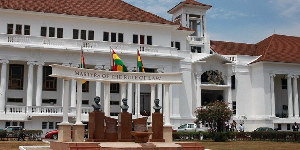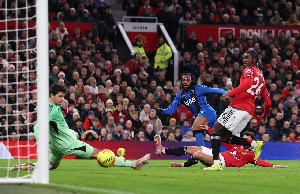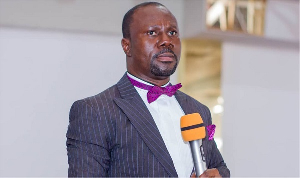By Kofi Ata, Cambridge, UK
This article is in response to recent development on the ongoing civil war within the ruling NDC on one side and the Rawlingses on the other, in particular, the address by the Ex-President Rawlings at the 30th anniversary celebrations of the 31st December Women’s Movement on May 15, 2012, in which he purportedly claimed that the Movement was the brainchild of his wife. This article is first and foremost, to state the facts about the formation of the 31st December Women’s Movement, who were the founders and how Nana Kondau Agyemang Rawlings came to control or own it.
Let me make it equivocally clear that, Nana Konadu Agyemang Rawlings was not a founding member or the founder of the 31st December Women’s Movement (hereinafter referred to as 31st DWM). Ghanaians have been deceived into believing that Nana Konadu Agyemang Rawlings was the founder of the 31st DWM. That is absolutely false, a fabrication and a gargantuan lie. This is the true and accurate story of the Movement as it was conceived and given birth to in 1982, as I witnessed it.
The Movement was founded and launched on May 15, 1982 by a group of young and radical women who were closely associated with the then Interim National Coordinating Committee (INCC) for Peoples/Workers Defence Committees (PDCs and WDCs) and the then National Youth Organising Commission (NYOC), both of which were based at the State House. They were very passionate about emancipation for Ghanaian women, especially, working class women. The aim was to give a voice to working class women in particular and women in general and to ensure that women played active role in the 31st December Revolution as well as in socio-economic development. It was also recognition by them that the new grass roots revolutionary organs, (PDCs and WDCs inclusive) were dominated by men, the fact that women, especially, petty traders were increasingly becoming victims of the revolution with the potential risk of alienating working class women from the ideals of the revolution.
From the National Secretariat of the INCC at the State House, which was later renamed National Defence Committee (NDC), they planned, organised, strategized and worked tirelessly (day and night) to establish the Movement. Mrs Nana Konadu Agyemang Rawlings was not one of them.
I was there from day one and some of us at the INCC/NDC contributed in diverse ways towards the birth of this new baby on May 15, 1982. I do not recollect why they chose that date as the inaugural day but they were of the view that, May 15 was the natural predecessor of the 31st December Revolution. It was also to gain wide media coverage of the inaugural event. However, their determination to launch the Movement on that date put extreme pressure on them as well as those of us who offered advice, support and assistance. To meet this deadline, they resorted to measures that were sometimes contentious. The word, “No” was not part of their language as they adopted an attitude of achieving whatever they needed “by any means necessary”, which also became the Movement’s motto or slogan.
The Founding Members were: Yaa Asiedu a member of INCC/NDC, the late Cynthia Nuama, a member of the NYOC, Mrs Obinnim, a member of the INCC/NDC, the late Leefua Asiedu (sister of Yaa Asiedu), Gertrude Zakaria, a PNDC Under-Secretary for Local Government and Rural Development, Mrs Ziada Bawa, Ama Kuta Danquah and four others that I only remember their first names as Sandra, Yawa, Agnes and Elizabeth. These were the brain behind the Movement and the original founders of the 31st DWM. There were other women involved, including wives of soldiers at Gondar Barracks where the Movement was launched on May 15, 1982. The group constituted an Interim Committee that coordinated their activities and was chaired by Gertrude Zakaria.
As mentioned earlier, they received support and assistance from a number of us at the INCC/NDC, especially, Ali Yemo, a member of INCC/NDC and one of the soldiers who took part in the May 15 1979 abortive coup and was tried together with Rawlings. An excellent artist, he designed the Movement’s symbol and T-shirt. Others were: Mr Jude Quarshie, a member of INCC and NYOC who later began a relationship with the late Cynthia Nuama that blossomed into marriage, Yeye Yen, Kutana, Kwesi Adu, all members of INCC/NDC, then Mr (now Dr) Chris Atim (member of PNDC and Chairman of INCC/NDC), Sergeant Aloga Akatapore and WO Agyie-Boadi, both members of the PNDC, James Qurashie, presenter of “Time with PDCs and WDCs, the late Kwame Adjiman, Lt Yeboah, the late Orsino, Koku Adomdza (Kuklus) Ato Quagrine, Kwesi Quayson, all of the INCC/NDC Secretariat and many others.
I will not describe the founding members as feminists but they were very radical and forceful in their approach. They were also not anti-men but held strong views that women were as good as men, if not better and were very effective operationally and strategically. We called them “the Decembrists”. Their modus operandi were similar to a pride of lionesses who schemed and worked together to make a kill, often, quite irritating because they insisted on getting whatever they wanted. Sometimes, they told you in plain language that you had no choice but to do what they required and were asking of you. They operated in gangs of twos, threes, fours, etc and used their numbers to their advantage. At that time my views on sex equality were in their formative stages so I found their approach manipulative and even intimidating, though they also had their feminine characteristics as they sometimes brought sweets and goodies to soften us.
The Decembrists adopted hard negotiation tactics of must win at all times. For example, the three leading lionesses (Yaa Asiedu, the late Cynthia Nuama and Mrs Obinnim) virtually coerced Ato Quagrine, the then Finance Officer of INCC/NDC and I to assist them to open the Movement’s first bank account at the Ministries’ branch of the Ghana Commercial Bank. They told us in the face that they were not asking for a favour but asking us to contribute to a good cause and if we were unwilling to assist they would not leave our office. This was because, their governing documents were not yet ready and banks were unwilling to open an account in the name of the yet to be launched Movement. Since the two of us were well known at the bank, where INCC/NDC had its accounts, they sought our assistance to persuade the bank manager to open an account for them, which we did under pressure.
Again, desperate to ensure that no one except the Chairman of the PNDC launched the Movement, they ambushed Mr Chris Atim in his office at the State House on the night of May 14, 1982 and insisted that he took them to the PNDC Headquarters at Gondar Barracks to see the Chairman of PNDC since Rawlings had not confirmed their invitation to him to formally launch the Movement the next day, else they would not let Chris Atim leave the State House to go to Gondar Barracks for a meeting. Despite assurances by Chris Atim that he would personally make sure that either Chairman Rawlings or a member of the PNDC launched the Movement, they were unconvinced and insisted on accompanying him to Gondar Barracks. As a compromise, Chris Atim agreed to take one of them (the chief tormentor, Yaa Asiedu) to Gondar Barracks to see the Chairman of the PNDC and that is how they got Chairman Rawlings to launch the Movement the next day at Gondar Barracks. These are not hearsay, I was there.
I also know that at least, two of the founding members (Yaa Asiedu and Mrs Obinnim) informed Nana Konadu Agyemang Rawlings about the formation of the Movement. Mrs Konadu Agyemeng Rawlings was invited to the launch of the Movement and she attended. She was subsequently asked by the founding members to be the Honorary Patron of the Movement, which she accepted. They never used the word “President”. After the formal launch of the Movement, plans were made for regional, district and local branches of the Movement to be launched throughout Ghana. There were also plans to secure a building as office premises for the Movement as they were operating from the National Secretariat of INCC/NDC.
Sadly, these plans did not materialise as envisaged by the founding members. In September/October 1982, there were differences of opinion within the ruling PNDC and INCC/NDC as to the direction of the country and the Revolution, particularly, as to whether Ghana should seek assistance from the Bretton Woods Institutions (IMF, World Bank and related agencies) or go to socialist countries led by the then Soviet Union and China for financial assistance. INCC/NDC members were mainly from the June Four Movement and the National Democratic Movement (NDM) and were full of Nkrumahists and left wing ideologues who were opposed to the idea of the PNDC seeking assistance from the Bretton Woods Institutions. The PNDC decided to go to the western controlled Bretton Woods (the beginning of Ghana’s Structural Adjustment Policies under the PNDC) and as a result, leading members of the INCC/NDC (especially from the June Four Movement) were of the opinion that Rawlings and a clique of PNDC Secretaries had betrayed the revolution.
Rawlings was allegedly made to believe that these left wing leading members INCC/NDC and their associates who planned and executed the 31st December Revolution with him were planning to remove him as Chairman of the PNDC and replace him with Sergeant Aloga Akatapore. Rawlings ordered for the immediate arrest of all of them. That is why Sergeant Aloga Akatapore was put under house arrest, later arrested and detained. Rawlings personally flew his helicopter into the homes of some of his revolutionary friends, now his enemies to arrest them but fortunately, some had been tipped off, gone into hiding and subsequently fled into exile. The INCC/NDC was ordered by the PNDC to cease operations until further notice. In fact, those of us who were moderates and not considered a threat were left with no leadership and direction. I led a three member delegation of senior INCC/NDC Cadres to seek audience with Chairman Rawlings at the Castle to find out what was happening but all we got was a few minutes with him in the reception to his office.
Among those who fled into exile for their dear lives were some of the founding and leading members of the 31st DWM. Most of those who were still around became disillusioned about what had happened, whilst others went back to their former organisations (most were on secondment from state and private institutions). As the Movement was operating from the INCC/NDC Secretariat, it also ceased operations. Finally, the NDC was reconstituted and some of us were screened at the Castle and reappointed as staff of the NDC but ordered to move out of the State House. The new NDC relocated to share office with the then National Commission for Democracy (NCD), now the Electoral Commission. Mr Yaw Akrasi Sarpong was appointed PNDC Secretary for PDCs and WDCs and Mrs Anaa Ennin as PNDC Member with additional responsibilities for NDC.
The INCC/NDC Finance Officer also operated the Movement’s accounts for them) and as he and some signatories of INCC/NDC and the Movement’s accounts were among those who had fled the country, I assisted both the reconstituted NDC and the 31st DWM to reactivate the bank accounts at the Ghana Commercial Bank. The only founding members who were available and worked with me to sort out the Movement’s bank accounts were the late Cynthia Nuama and Mrs Obinim. It was this stage that Mrs Konadu Agyemang Rawlings was approached by the two of the original founding members to directly get involve with the Movement. I know this because I personally accompanied Mrs Obinim to Nana Konadu Agyemang Rawlings’s house to discuss the future of the Movement. However, I was not privy to what was discussed because on arrival, I did not go in with Mrs Obinim but instead joined the security guards on duty for lunch for which Mrs Rawlings rightly reprimanded me. She advised me to go in and ask for food next time and not parasite on what was meant for the security guards since they were unable go out in search of food whilst on duty. That is how Nana Konadu Agyemang Rawlings came to lead the Movement and took it over as her Movement.
Having said the above, let me end by saying that this is not meant to discredit Mrs Nana Agyemang Rawlings. In fact, I must confess that Nana Kondu Agyemang Rawlings deserves credit for taking over the Movement and nurturing to what it is today after it almost suffered sudden infant death syndrome after just five to six months of its birth. I suspect if she had not taken control over the Movement it would have died a natural death. Who knows?
If there is anyone in or outside Ghana, including Nana Konadu Agyemang and my former colleagues at INCC/NDC who has facts and evidence to contradict what I was a witness to, I invite them to challenge my version of facts on the Founder/s of the 31st DWM.
Kofi Ata, Cambridge, UK
Opinions of Saturday, 26 May 2012
Columnist: Ata, Kofi














